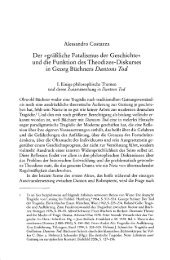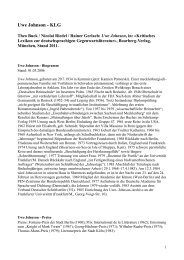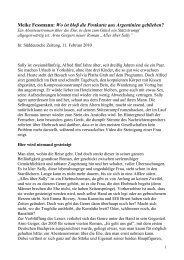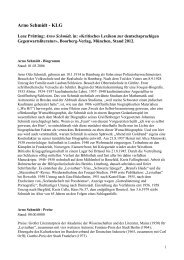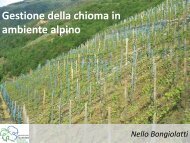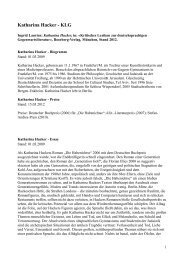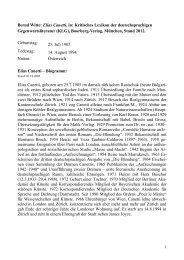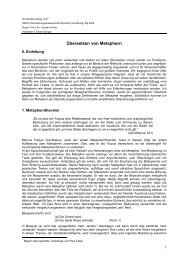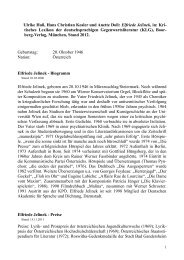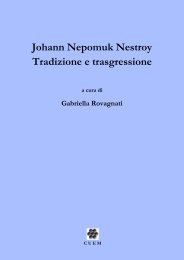Volume of Abstracts - Università degli Studi di Milano
Volume of Abstracts - Università degli Studi di Milano
Volume of Abstracts - Università degli Studi di Milano
You also want an ePaper? Increase the reach of your titles
YUMPU automatically turns print PDFs into web optimized ePapers that Google loves.
5 th Int. Workshop on Ice Caves (IWIC – V)<br />
Barzio (LC), Valsassina, Grigna and <strong>Milano</strong>, September 16 – 23, 2012<br />
<strong>Volume</strong> <strong>of</strong> <strong>Abstracts</strong><br />
AIR TEMPERATURE VARIABILITY AND ICE CAVE MICROCLIMATE<br />
CHARACTERISTICS OBSERVED IN ŽUPANOVA JAMA, SLOVENIA<br />
Košutnik J. 1 & Ravbar N. 2<br />
1 Cesta Ceneta Stuparja 148, 1231 Ljubljana<br />
2 Karst Research Institute ZRC SAZU, Titov trg 2, 6230 Postojna<br />
Detailed monitoring <strong>of</strong> cave air temperature is being carried out in a show<br />
cave <strong>of</strong> Ţupanova jama (Mayor‟s cave) in order to reconstruct its temporal<br />
and spatial variability patterns. The cave is located at the northern rim <strong>of</strong><br />
the Dinaric karst in central Slovenia. It has two entrances at the elevations<br />
<strong>of</strong> 442 m and 477 m a.s.l. respectively. The known parts <strong>of</strong> the cave<br />
consist <strong>of</strong> eight collapse chambers sited relatively close to surface – max.<br />
thickness <strong>of</strong> the ceiling is 45 m. Since February 2009 monitoring was being<br />
set up on six <strong>di</strong>fferent locations within the cave and outside the cave.<br />
Continuous measurements with a resolution <strong>of</strong> 30 and 60 min respectively<br />
have been made using BaroDiver (Eijkelkamp) and T-buttons 22L. The<br />
study focuses on two cave chambers that are opened to surface and most<br />
influenced by the external temperature; Ledenica (Ice cave) and<br />
Permetova dvorana (Mayor's hall). Ledenica is a lower lying chamber and<br />
has a pocket-shaped morphology with steep descen<strong>di</strong>ng walls. On one side<br />
the chamber opens to the surface and on the other is connected to the<br />
Permetova dvorana. This is a bell shaped chamber with the entrance on the<br />
top. In Ledenica the results <strong>of</strong> air temperature time series analyses show<br />
seasonal and daily patterns that are characteristic for ice caves. Air<br />
temperature gra<strong>di</strong>ent and seasonal effect on heat exchange has been<br />
observed. When the outside air is cooler and thus denser than the cave air,<br />
it intrudes the cave through the lower entrance and sinks under the<br />
warmer air by <strong>di</strong>splacing it. The warmer cave air rises and flows towards<br />
and then through the upper entrance. This upward flow is referred to as<br />
“winter flow” which results in cooling <strong>of</strong> the cave air and rock. When cave<br />
air is cooler than the air outside the cave, it flows from the upper entrance<br />
down through the cave and out the lower entrance. This downward flow is<br />
referred to as “summer flow”, leaving the lake <strong>of</strong> cold air at the bottom <strong>of</strong><br />
the pocket-shaped chamber isolated and stagnant. The study shows that<br />
not only caves at higher elevations and with the presence <strong>of</strong> perennial ice,<br />
but also special con<strong>di</strong>tions, such as cave morphology can contribute to ice<br />
cave climatic con<strong>di</strong>tions.<br />
49




